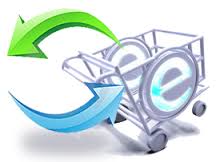Why Retailers Should Care About Data Mining
 In an increasingly competitive market space, retailers need to know everything they can about their customers: who they are, what they buy, when they buy, why they buy? And thanks to the amount of data flying around about customer buying behaviors retailers can answer all those questions and more, provided they have the technology needed to collect, organize, clean, and analyze that information. With data mining as part of a business intelligence initiative, retailers can have real answers to real questions in real-time.
In an increasingly competitive market space, retailers need to know everything they can about their customers: who they are, what they buy, when they buy, why they buy? And thanks to the amount of data flying around about customer buying behaviors retailers can answer all those questions and more, provided they have the technology needed to collect, organize, clean, and analyze that information. With data mining as part of a business intelligence initiative, retailers can have real answers to real questions in real-time.
Here are 3 reasons why retailers should care about the data mining abilities a business intelligence platform can give them:
Conduct shopping cart analysis.
Shopping cart (or market basket) analysis is commonly used by retailers to better understand customer purchasing preferences. Data tracked with shopping cart analysis can be used to develop more pointed actions designed to cross-sell products that are frequently purchased together, up-sell customers at check-out, and pair products with higher profit margins alongside products in high demand. Businesses can leverage the insights gained from a shopping cart analysis to optimize assortment planning and validate promotions, too. For instance, when an online retailer offers a free shipping deal does that generate more activity than a 10% off coupon? Over time, retailers can use the data mined from shopping cart analysis to guide their marketing and sales activities to hit the right customers with the right offers at the right times.
Learn who your best customers are.
Nothing is more important to a retailer than really knowing their customers. And with data mining software they can learn exactly who their best customers are, what pushes them to shop, how frequently they buy, how much they spend per order, and more. With this kind of business intelligence, retailers can easily divide customers into high-spend, medium-spend and low-spend customer segments. They can use the data to better understand the spending patterns, communication preferences, and merchandising preferences of their customers, and can then group them by these characteristics and focus on one segment at a time. BI reporting can easily organize that customer data in performance scorecards that focus on key metrics like:
- Lifetime revenue contribution
- Discount impact
- Net profitability
- Customer performance by month
- Channel profitability
- Customer trends
- RFM frequency
All this data, and more, tells you the true story of your customer base. You aren’t guessing at their buying behavior–you can track and measure it.
Measure marketing campaign effectiveness.
Retailers must also ensure their marketing campaigns are reaching the right audiences at the right time with the right offers that prompt action. With data mining capabilities, they can track all their various marketing campaigns or promotions to see which ones have the biggest return. For instance, retailers can use business intelligence software to:
- Monitor how much each promotion is costing in order to avoid overspending
- Track and monitor which shipping, discount and BOGO promotions are being used by customers … and which channels (online, social, foot traffic) are generating the most business
- Analyze customer profitability to determine which marketing campaigns bring in higher-spending customers
- Assess how well sales increased over a promotional period
This data can then be used to determine the frequency of a retailer’s marketing campaigns, which type of campaign will be most effective, and to help better organize a multi-channel campaign strategy.
Using data mining and business intelligence software, retailers can increase profit and revenue by understanding which customers and products really drive their business.